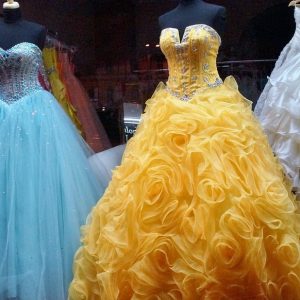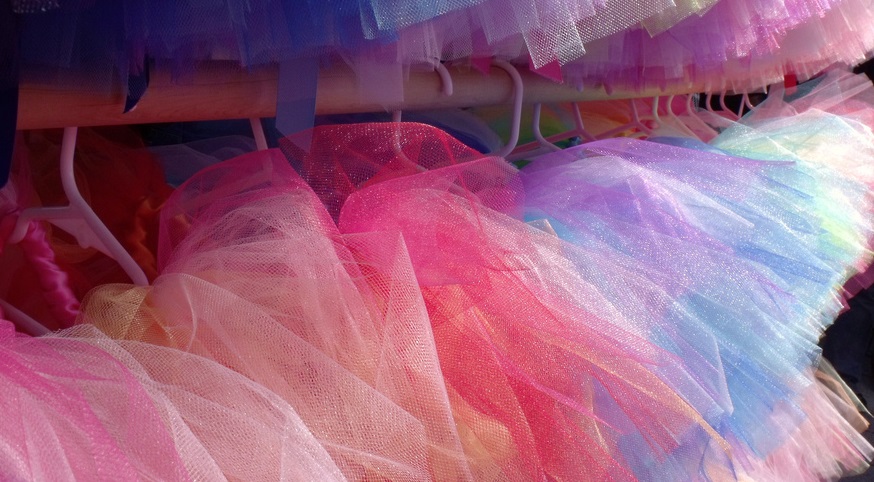What is Mesh?

The world of fashion has seen the popularity of mesh garments soar within the last few years, but exactly what is mesh, and why are high-street stores and designers alike fawning over it? This sheer, soft fabric with tons of tiny holes has been loosely woven or knitted to create the signature look and structure.
How is Mesh Made?
‘Mesh’ itself refers to a knitted structure of fibres, and is technically a barrier created from connected strands. The yarns are knitted or woven together, resulting in a fabric with open spaces in between the strands of yarn. Mesh isn’t only used for fashion fabrics, and can be made from a huge range of materials depending on its intended use – it isn’t limited to fabrics for textiles.
What is Mesh Made From?

When it comes to mesh fabric, the material is typically made from polyester or nylon. The synthetic fibres are woven to create a flexible, net-like fabric which has a huge range of uses. Contrasting to this, mesh can also be created from metals for a sturdier and more structured material, often for industrial use.
Nylon Vs Polyester Mesh
Mesh fabric is typically made from polyester or nylon, and on face value these two types of mesh don’t seem all that different. Both synthetics can be used for similar applications, but there are differences between the two types of fabric. Nylon is made from polyamides, whilst polyester is comprised of polyester materials and can also be made using plant materials. As a result, polyester is more fibrous to the touch whilst the feeling of nylon resembles silk. Nylon also has more stretch to it than polyester. Nylon is longer-lasting than polyester, so for items that will have a lot of wear and tear it may be the better option to go for.
History of Mesh in Fashion

Mesh fashion isn’t just a recent trend; it dates all the way back to 1888, and has fluctuated in popularity ever since. It began when British mill owner Lewis Haslam was out with his aunt, and noticed that her gloves had a few holes in them. She replied that her hands were still warm despite this, and thus the idea of mesh came to fruition. Haslam created the original Aertex mesh material, which was labelled as being hygienic and breathable despite temperature changes, and began originally producing men’s shirts and undergarments. In the 1980s Adidas began using Aertex fabric for their sportswear, causing a surge in popularity both in sportswear and general everyday fashion. The popularity of mesh continued to grow, with celebrities donning mesh vests and dresses all over MTV.
What is Mesh Used For
Polyester or nylon fabric mesh is generally used for creating casual garments and fashionwear, such as vests, dresses, and other items to be layered. Mesh is still incredibly popular in sportswear due to it’s breathability and being able to regulate temperature well. Polyester mesh is also used for creating the mesh screens used in screen-printing, due to it’s water-resistant properties and the miniature holes allowing ink to pass through the fabric.
Net mesh has a wider range of uses, and is generally used to create parts of tents and camping gear. The breathable nature of the fabric means it’s perfect for regulating temperature in different weather conditions, making it ideal for camping equipment. It also prevents insects from being able to bite the skin, which is an essential for certain types of camping.
One very common but perhaps surprising use for mesh is in the medical industry; it has become commonplace in surgical procedures, and is primarily used to support organs or tissues. There are two main types of surgical mesh, temporary or permanent. A temporary sheet will dissolve in the body over time, whereas a permanent one will remain in the body. The loosely woven sheet of synthetic fibres is most commonly used in hernia surgery, or for prolapsed organs.

Properties of Different Mesh Fabrics
Mesh textiles may look and feel somewhat similar, but the type of fibres used to create them means they have very different properties.
Polyester Mesh
- Commonly used for athleticwear
- Breathable
- Can wick away moisture
- Water resistant
Tulle
- Fine mesh
- Used for wedding veils and evening gowns
- Very versatile
Mesh Netting
- Can protect skin against insect bites and stings
- Used for camping equipment and gear
- Breathable

Power Mesh
- Used by 3D Space Mesh fabric companies to create outfits designed to smooth the body, e.g. control pants
- Used more in undergarments for women
- Breathable
- Similar to spandex, very stretchable
- Comfortable
Nylon Mesh
- Porous and lightweight
- Used for garments, as well as beekeeping veils, screens in tents, laundry bags
- Long-lasting
- Evening dresses
Print Your Own Mesh Fabric
Printing your own mesh fabric is so easy to do. Upload the pattern or piece that you want to feature on your printed mesh and make sure it’s the right size and in the right position. If you want to, you can repeat the design, or leave it as a single print. Order a test print and find out for yourself how simple it is.
Get hands on with mesh fabrics and hundreds of other fabric options with your own swatch pack. Get a first hand feel of each fabric to experiment with different materials, or choose the best fabric for your own projects.

